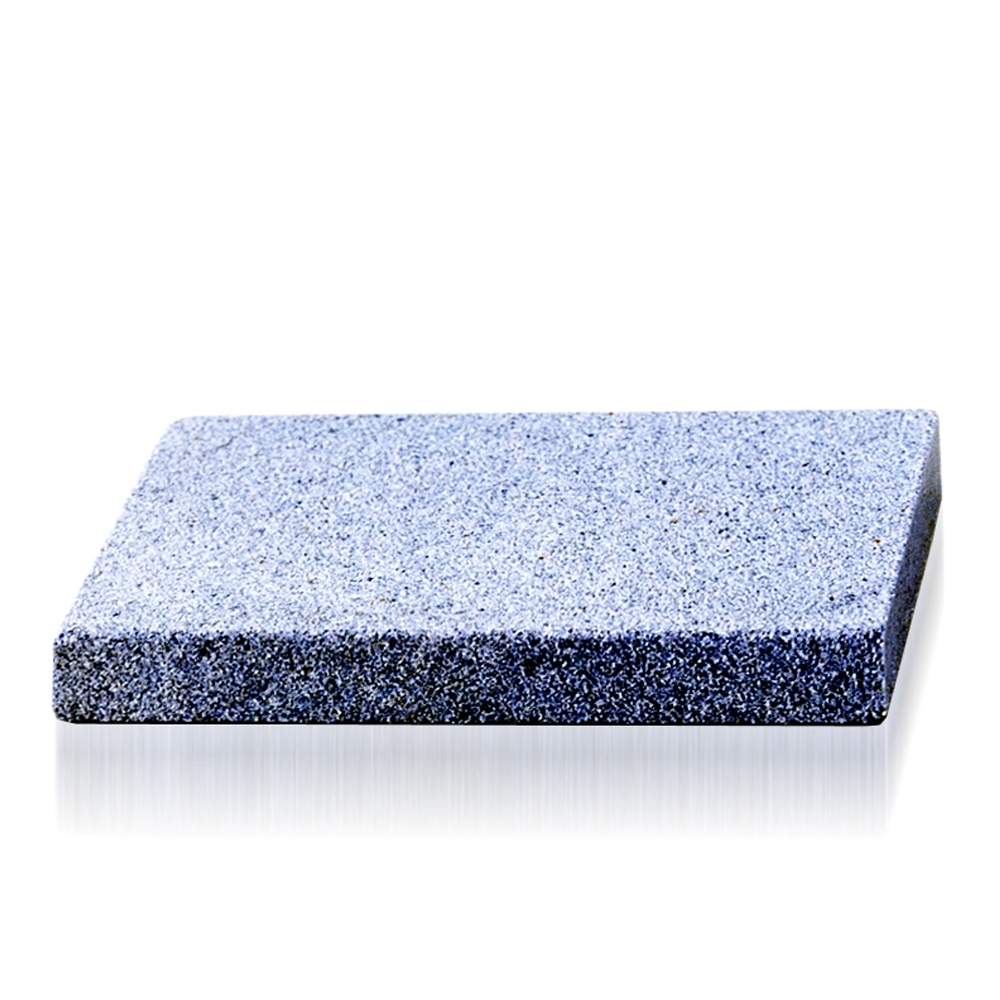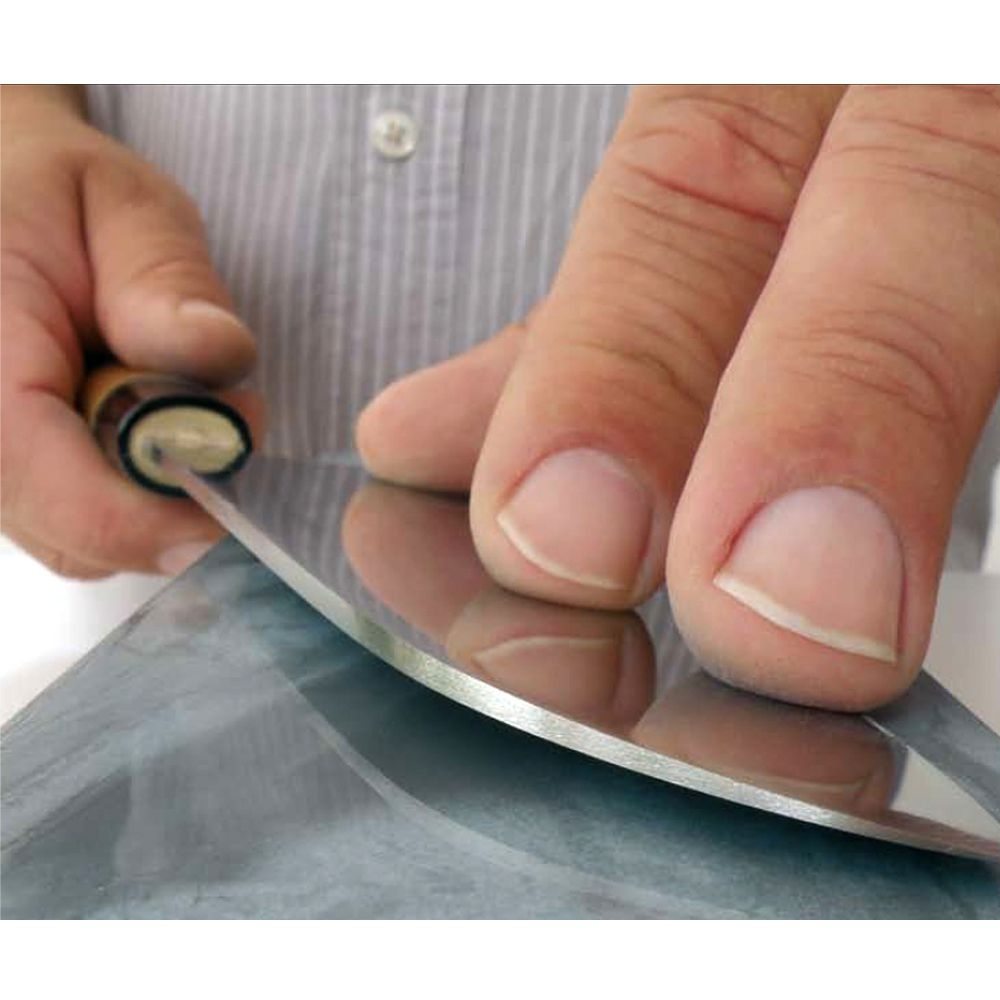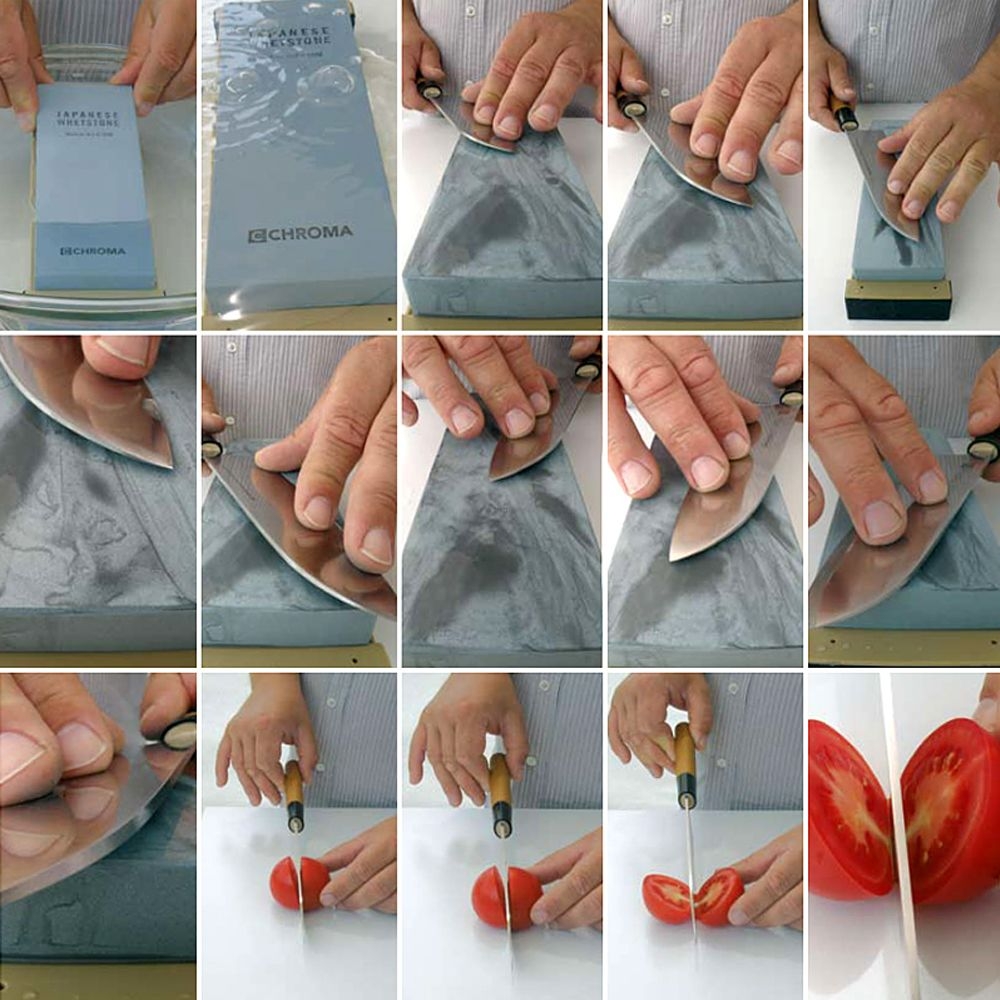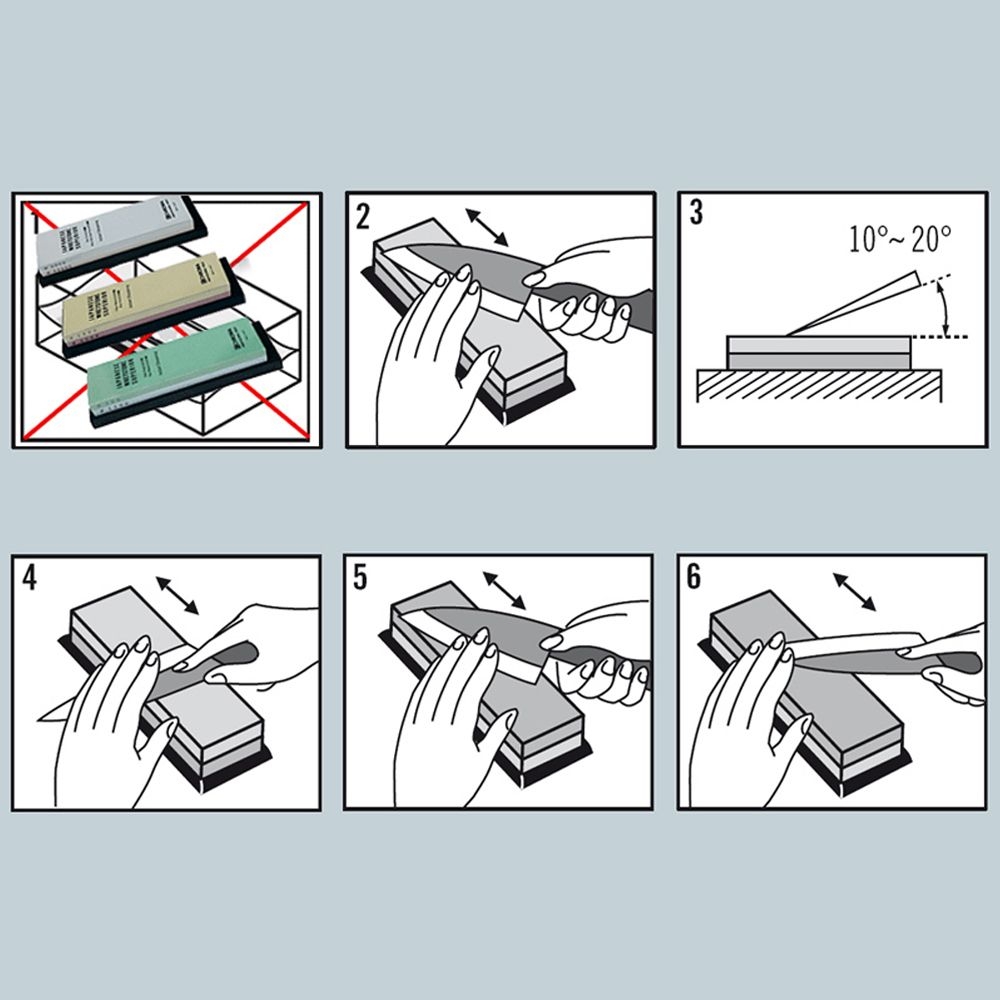KC-90 Rust Cleaner - To eliminate small rust spots on the blade.
- 6,5 x 4 x 0,9 cm
- Grit: 180
Kitchen Knife Sharpening
There are various types of waterstones & ceramic stones available and normally a medium grit stone is sufficient to start with. However, if the blade is blunt or damaged, it may be necessary to start with rough grit. There are several differences between waterstones and ceramic stones. A waterstone must be placed in water and allowed to soak for 10-15 minutes to allow it to absorb sufficient moisture. A ceramic stone also requires water, but only needs to soak in water for 3-5 minutes. A ceramic stone is harder than a waterstone, so it will sharpen your knives more quickly. A ceramic stone will last longer and will not develop valleys or grooves as easily as a waterstone.
-
The stone should be soaked for the required amount of time before use.
-
Hold the knife so that the blade meets the stone at a 10-15 degree angle, then push back and forth across the stone in smooth steady strokes maintaining the same angle. Maintaining the same angle is most important and you will know that you are maintaining the same angle from the sound the knife makes against the stone. If you are making the same sound with each stroke back and forth against the stone, you are maintaining the same angle.
-
Repeat the stage above on both sides of the blade going from one side to the other until your knife is sharp and there are no burrs on either side.
-
During sharpening a certain amount of wet powder will appear, but do not wash or wipe this residue and continue sharpening. Although this powder appears unsightly, it is this residue which sharpens the knives.
-
After sharpening, your knives should be washed in hot water and then towel dried.

Kochmesser.de
Wiesenstrasse 33
CHROMA MESSER GMBH & CO. KG
60385 Frankfurt
Deutschland
shop@chroma-messer.de
Login




